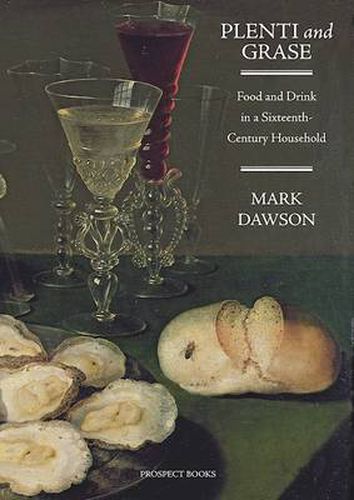Readings Newsletter
Become a Readings Member to make your shopping experience even easier.
Sign in or sign up for free!
You’re not far away from qualifying for FREE standard shipping within Australia
You’ve qualified for FREE standard shipping within Australia
The cart is loading…






This is an important study of the household affairs - especially as they relate to the provisioning and consumption of food and drink - of the Willoughby family of Wollaton Hall in Nottingham and Middleton Hall in Warwickshire. Made wealthy by inheritance, coal mining and iron smelting, they built a Tudor wonder-house at Wollaton, designed by the architect Robert Smythson. The survival of their archive allows close analysis of their domestic arrangements. For too long, food history has consisted of rummages among old cookbooks and juicy extracts from published diaries, with little serious work done on private archives and financial records. In consequence we have much anecdote and little hard evidence. This book should redress the balance.Drawing upon the household accounts, Mark Dawson describes the patterns of food purchasing and supply, whether from markets and merchants or from the family’s own estates. He models the dietary intake both of the family and its servants; reconstructs the kitchen administration and organisation; and links the Willoughbys’ experience to that of England as a whole, especially in relation to dietary and culinary change. There was a great deal going on in the Tudor kitchen: styles of cookery were altering, new foodstuffs were being added to the national shopping basket, both from our European neighbours and from new territories and discoveries overseas.A series of chapters treats the main categories of foods: grains, meats, fish, fruit and vegetables. There is discussion of drinks, whether wine or beer (particularly the shift from ale to beer as the standard beverage). There is an account of the strategies of purchase, preservation and storage of foods, of the kitchen equipment, and of the kitchen staffing and operation. And there is an account of the family of Willoughby itself, whose great house at Wollaton survives as the museum of the City of Nottingham. Plenti and Grase will appeal to historians and general readers interested in Tudor England; to culinary historians interested in the development of the modern kitchen; to local students wishing to discover more about Midland history; and anyone curious about how these great houses were run, and the life that went on inside their walls.
$9.00 standard shipping within Australia
FREE standard shipping within Australia for orders over $100.00
Express & International shipping calculated at checkout
This is an important study of the household affairs - especially as they relate to the provisioning and consumption of food and drink - of the Willoughby family of Wollaton Hall in Nottingham and Middleton Hall in Warwickshire. Made wealthy by inheritance, coal mining and iron smelting, they built a Tudor wonder-house at Wollaton, designed by the architect Robert Smythson. The survival of their archive allows close analysis of their domestic arrangements. For too long, food history has consisted of rummages among old cookbooks and juicy extracts from published diaries, with little serious work done on private archives and financial records. In consequence we have much anecdote and little hard evidence. This book should redress the balance.Drawing upon the household accounts, Mark Dawson describes the patterns of food purchasing and supply, whether from markets and merchants or from the family’s own estates. He models the dietary intake both of the family and its servants; reconstructs the kitchen administration and organisation; and links the Willoughbys’ experience to that of England as a whole, especially in relation to dietary and culinary change. There was a great deal going on in the Tudor kitchen: styles of cookery were altering, new foodstuffs were being added to the national shopping basket, both from our European neighbours and from new territories and discoveries overseas.A series of chapters treats the main categories of foods: grains, meats, fish, fruit and vegetables. There is discussion of drinks, whether wine or beer (particularly the shift from ale to beer as the standard beverage). There is an account of the strategies of purchase, preservation and storage of foods, of the kitchen equipment, and of the kitchen staffing and operation. And there is an account of the family of Willoughby itself, whose great house at Wollaton survives as the museum of the City of Nottingham. Plenti and Grase will appeal to historians and general readers interested in Tudor England; to culinary historians interested in the development of the modern kitchen; to local students wishing to discover more about Midland history; and anyone curious about how these great houses were run, and the life that went on inside their walls.